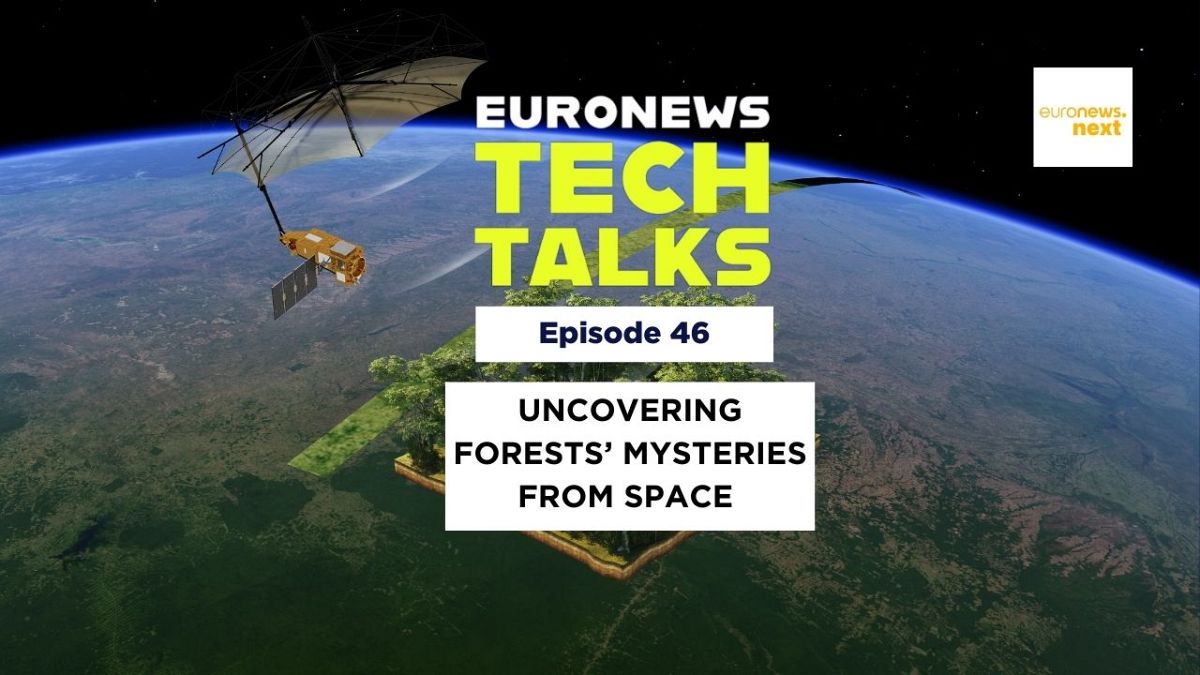Over 95 per cent of French Guiana – a French overseas department nestled between Brazil and Suriname – is covered in tropical forests, a wild, thick, humid ecosystem found in regions near the equator.
Tropical forests play an important role in mitigating climate change, as they absorb a great share of the carbon dioxide (CO2) stored in terrestrial biomass.
However, quantifying exactly how much CO2 these forests absorb is challenging, as their dense canopies make them almost impenetrable.
But the answer to these doubts might come from French Guiana itself.
Blasting off from Europe’s spaceport in Kourou on April 29, the European Space Agency (ESA) launched Biomass into orbit, a satellite designed to measure the amount of carbon tropical forests store.
Euronews Tech Talks was on site for the liftoff. In the first of two special episodes dedicated to the satellite, the podcast looks back at the eve of the launch to explore the satellite, the people working on it, and how they felt ahead of the crucial launch day.
The Biomass satellite
Biomass is the seventh mission of ESA’s Future EO programme, a series of projects based on proposals from scientists to test new technologies and analyse specific aspects of our planet.
In the case of Biomass, its standout feature is its P-band radar, a technology never used before in space.
The P-band instrument, which resembles an umbrella, sends low-frequency signals that penetrate the canopy and bounce back to the satellite, providing data on the quantity of carbon stored and its location within the trees.
This instrument will not replace on-the-ground research on tropical forests, but it will provide essential data to understand their role in carbon flows.
In fact, grasping how much carbon is stored in terrestrial biomass can help researchers determine the amount of CO2 in the atmosphere.
“It’s not just scientifically relevant, but it also has real value for all of us citizens,” Simonetta Cheli, ESA director of Earth observation programmes, told Euronews.
“It contributes to a healthier planet, to improving our health and the quality of the air we breathe,” she continued.
Biomass: A European project
To organise and conduct the mission, ESA relied on the support of multiple European actors.
The satellite was manufactured by Airbus Defence and Space, and launched into orbit by the Vega C.
The rocket’s components were produced across 13 ESA member states, with the Italian company Avio serving as the lead contractor and design authority of the project.
“It took us years to get here, but now we’re able to offer a range of launch capabilities that can meet practically any need in Europe,” Giulio Ranzo, CEO of Avio, told Euronews.
The other two important players in the project are Arianespace and CNES, the French space agency.
The former oversaw the launch and is responsible for the commercial exploitation of the launcher.
The latter contributed to the research behind the satellite’s development, managed the launch campaign, and is involved in collecting data from the satellite in orbit.
All these actors worked together for over a decade to prepare the satellite and its launch into space, a challenging move due to the ambitious novelty of the P-band radar.
The day before the launch
On April 28, the day before the launch, Kourou spaceport welcomed representatives, professionals and journalists looking forward to witnessing Biomass’s lift-off.
In the Jupiter Centre, one of the main buildings in the space facility housing the Mission Control Room, the air was filled with a shared sense of anticipation.
Some people were rational, including Jean-Frédéric Alasa, launch range operations director at CNES.
“We’re always excited to launch because it’s the end of a long phase of preparation,” he told Euronews. “But we also consider the situation in which we have a failure, because a launch is complicated”.
Others were driven by a determined optimism.
“We are very confident, it will work, and it will be useful for all of us,” Michael Fehringer, Biomass project manager, told Euronews.
But how did the launch go?
To find out more, listen to this episode of Euronews Tech Talks and to the next one, out on May 28.

